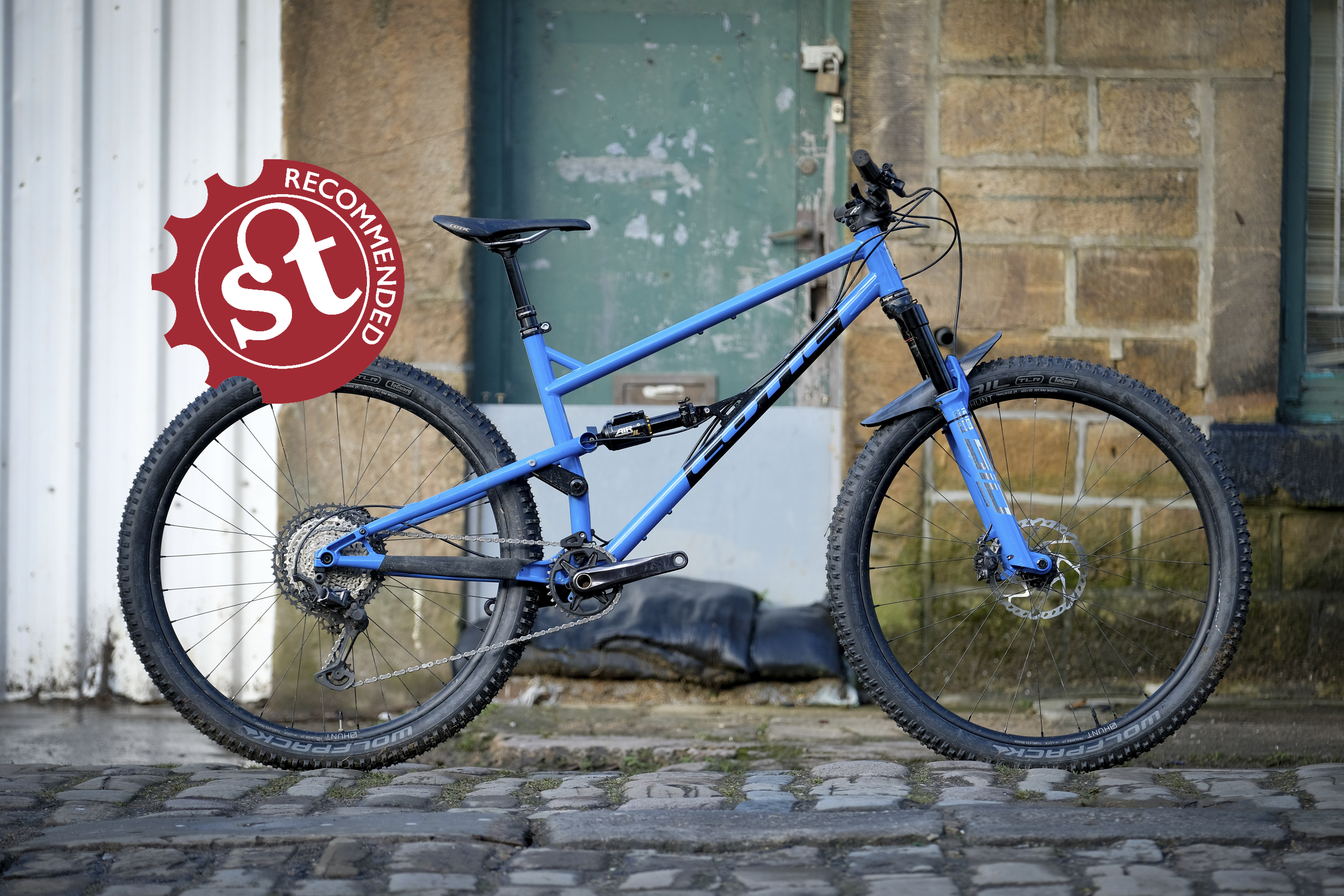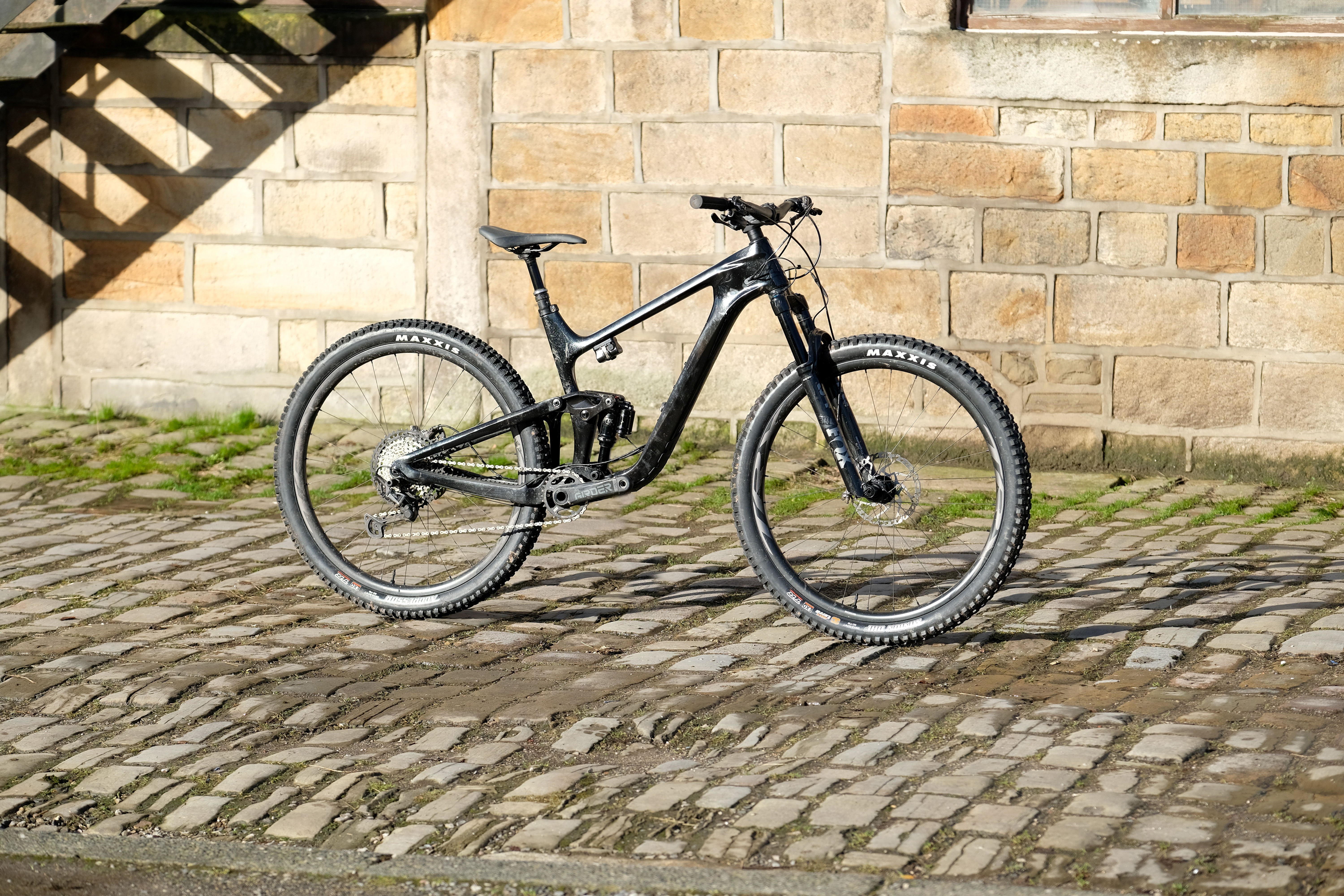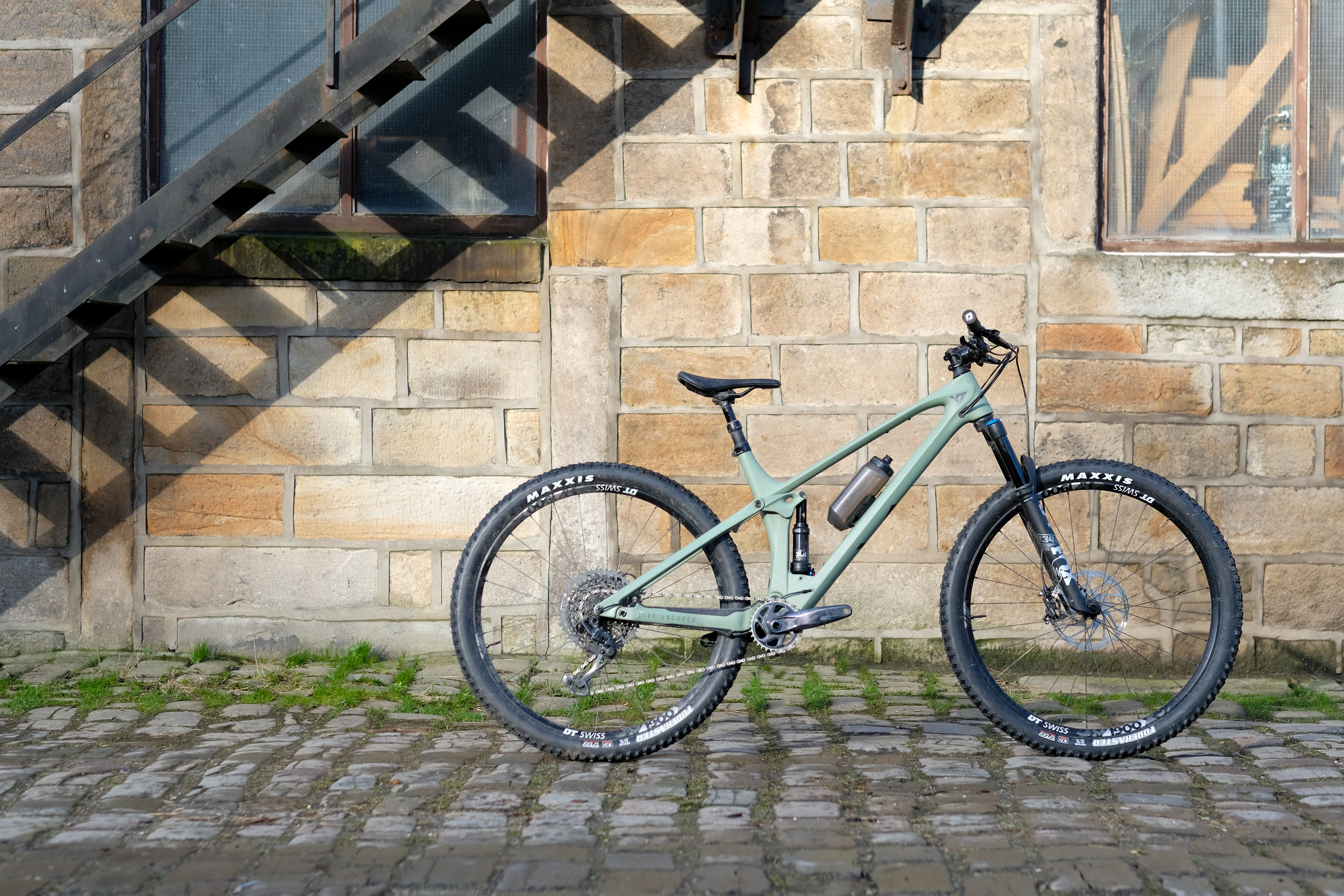Benji ponders the meaning of ‘short’ as he rags these three not-long travel bikes round his local trails.
What is short travel? Too short? Short enough? Shorter than what? What is the average travel of A Mountain Bike in 2022 anyway? It’s hard to say. But because we, as bike journos, need to do such things we’re going to say… something.
If we all agree (ha!) that these days 140–150mm travel is pretty standard for a do-it-all ‘trail bike’ mountain bike, anything with less travel than that is ‘short travel’. Agreed? OK then. Let’s move on.
Let’s move on with an even trickier question. Why would you want a short travel mountain bike? Aren’t 140–150mm travel mountain bikes just better? In a word, yes. Yes in a practical and box-ticking sense. A 150mm travel trail bike can do everything you ask it to. Uphill, downhill, alonghill. A 150mm bike won’t scare you or fail you. A lot of the time though, it might not excite you.
Dropping down in travel can up the stakes. It can up the risks. If done well, it can up the (wo)man-machine relationship of a rider and their bike. Consequently it can also up the rewards. Short travel bikes can make you feel more like you’re in charge. For better or for worse. You’re not a passenger on a short travel bike. You have to be involved. Everything is your fault.
There are, obviously, even shorter travel bikes than the three we have gathered for this test. There are overt cross-country race bikes hovering around the 100mm travel mark. There are in-vogue down-country bikes fashionably simmering around the 120mm zone.
Back to the original question, remixed. Are these bikes ‘short travel’? Some of us here would say yes, others would say no. It’s a grey area. These are the bikes that can fall through the gaps of the modern mountain bike marketeer. That alone is reason enough to give them some limelight in the hallowed pages of Singletrack World.
The Verdict
All three of these bikes exist in a grey area. And we’re not talking about Todmorden. These bikes don’t fall easily into any of the currently accepted mountain bike buzzwords. They aren’t down-country. They have too much suspension travel. They’re not terrifyingly niche enough. They aren’t Trail Bikes. They don’t have enough suspension travel. They’re undergunned when it comes to bombing down mountains.
So what exactly are they? We can’t really say. It’s tempting to cop out and say they’re just mountain bikes, end of. But while that’s a pleasingly glib description, it doesn’t really help.
In a lot of ways, there are two bikes here that are easier to describe (AKA pigeonhole) and one that is trickier to pin down. Both the YT Izzo and the Cotic FlareMAX exhibit a clear personality and ride characteristic. And they’re both significantly different from each other. One is a stiff stomper for modern, groomed flow trails. The other is a sinewy shredder for grey-haired riders looking to rekindle their love affair with their local trail network.
The Giant Trance is very, very, very… neutral. As such, it is the hardest type of bike to describe and enthuse about. On one hand, you could accuse of it not being especially good at any one thing. On the other, you could say that it had no weaknesses either. The latter is the fairer – and more accurate – description. It’s the bike that arguably offers more to more people. It’s a safe bike. And while safety is never going to light a fire under anyone – especially spoiled bike journos who rarely spend any of their own money on bike stuff – having a safe bet is a very exciting proposition.











